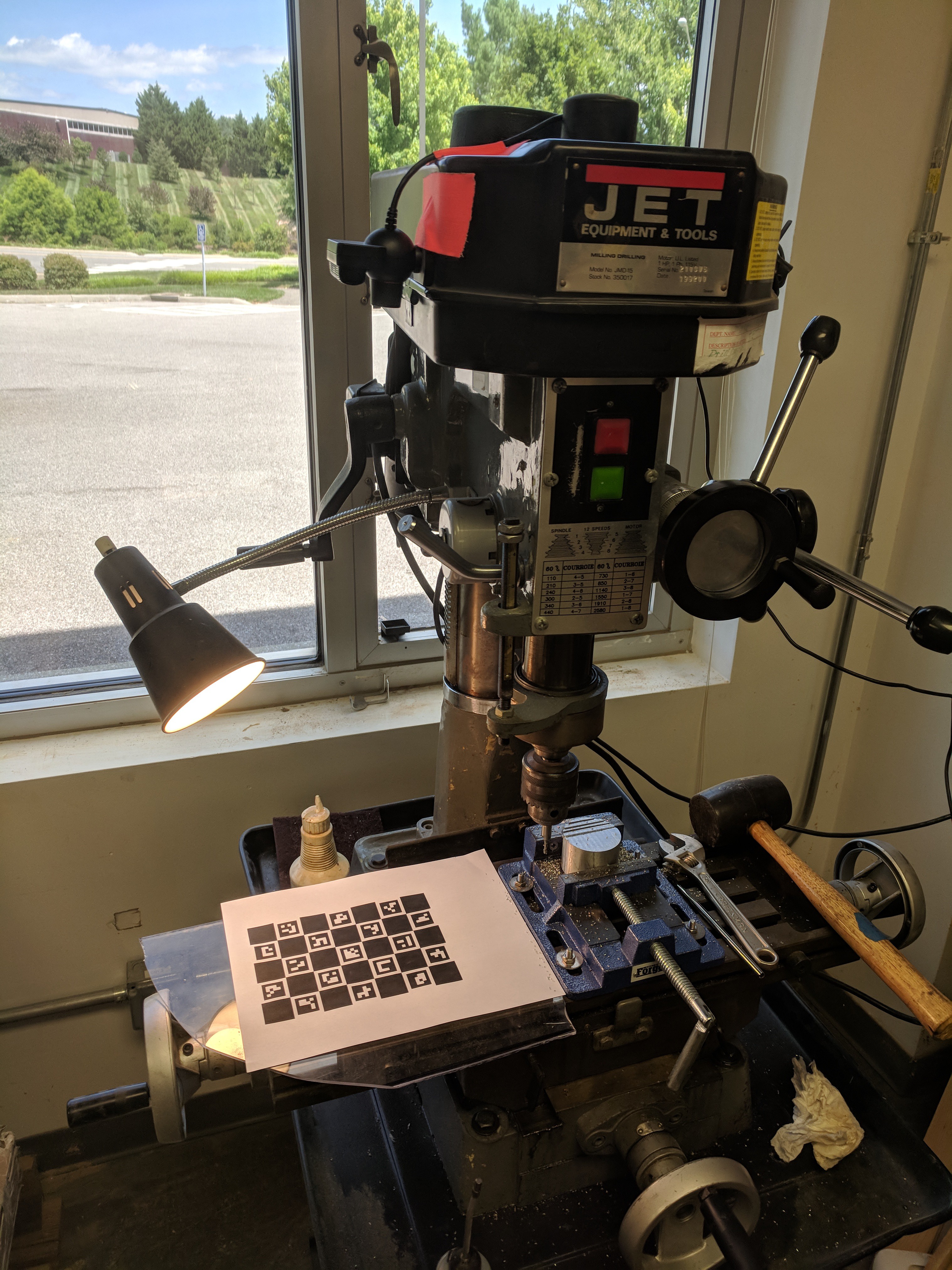Today the code was created and initial testing was done.
TLDR
Absolute accuracy of Camera DRO is about 2 thousandths. Relative accuracy is similar. This is way better than I expected.
Test Parameters
- PS3 Eye Webcam at 640x480
- Telephoto focal length setting
- 5x7" Charuco Board
- Webcam about 18" away
Procedure
- Zero the Camera DRO. This accounts for the location of the table with respect to the camera.
- Move an inch or so in the X direction.
- Zero the angle (this calibrates any twist in the Charuco board relative to the table)
- Move each hand wheel a set amount based on the dial (I did 0.010" and 0.100"), and look at the Camera DRO readout.
Setup

Don't yell at me for holding an end mill in a drill chuck, we (Hacksburg, the makerspace where this mill is located) just bought the machine and we don't really have any accessories for it yet. Holding round stock in a vise like that isn't good either, but it's sufficiently tight that an 1/8" endmill isn't taking it anywhere.
Do Aluminum chips get on the Charuco board? Yes. It doesn't seem to really matter though, but at some point it will.
Performance
I didn't write down any performance numbers. The performance is way better than I expected. The first movement of the hand wheel (step 4 above) usually came up short, even though I took out the machine backlash (as far as I can tell), but it was only short by a couple thousandths. As I moved the hand wheel forward a couple rotations, the delta between rotations was between 0 and 2 thousands off, and there was no overall scale issues, which amazed me. By "overall scale issues" I mean that when I moved the hand wheel 10 turns, the absolute error was similar to when I moved it 2 or 5 turns.
My "ground truth" position came from the hand wheels, which are subject to backlash problems. The machine I'm using doesn't have a DRO, which is the primary motivation for this project. I also cut some test slots using the Camera DRO, but I think the machine actually moved when I engaged the material (1/8" flat end mill cutting ~0.020" deep slot in Aluminum), which may be a limitation of the machine. The machine was recently purchased at auction and may be worn out, I don't know its history.
Camera resolution isn't usually as important in computer vision as most people think it is, more pixels usually just means more computation time, but here I actually think the limiting factor is the pixel count. I'm going to retest with a higher resolution webcam when I can.
The measured table position moves ~0.020" when I turn the machine on. This is probably because the webcam is mounted to the movable part of the belt guard. I'd like to get the webcam mounted with a mag base to the head casting somewhere.
Originally, I had a piece of Acrylic over the Charuco board, for protection. Interestingly, the difference in refractive index of the Acrylic seems to have a real impact on accuracy. I'll quantify this more accurately in the future.
Conclusion and Future Work
I'm amazed this works so well. Future testing will hopefully involve a nicer webcam and actual numbers.
I did absolutely zero research to see if anyone else has done this before, let me know if you've seen someone try this or something like it before.
 MaxBareiss
MaxBareiss
Discussions
Become a Hackaday.io Member
Create an account to leave a comment. Already have an account? Log In.